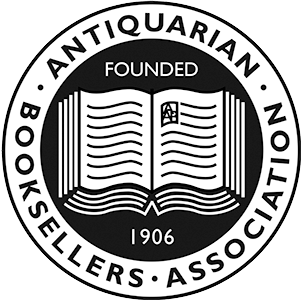Woodcut map of the Americas, second state with 'Peru' written horizontally, double-headed eagle holding the coat of arms of Castile and Leon, image 166 x 130mm. (sheet 188 x 140mm.), [Antwerp, 1566, 1567 or 1583]
An extremely rare map of the Americas.
This scarce map is filled with place names along the coastlines, an uncommon feature for a map of this region in the mid-sixteenth century. The map was published by Jean Bellere, a Dutch printer and publisher, and first appeared in Lopez de Gomara's La Historia General de las Indias in 1554. The detail in North America was derived from the explorations of Ayllon, Gomes and Fagundes. Lucas Vazquez de Ayllon was a Spanish explorer who initiated the first European attempt to establish a settlement in the area now known as the United States. In 1526 Ayllon established the colony of San Miguel de Gualdape in what is believed to be either present-day Georgia or South Carolina. Ayllon died in the settlement, which lasted only a few months due to a scarcity of supplies and harsh winter. Just north of Florida, C. d. S. Roman, B. del Principe, and C. d. Trafalgar are nomenclatures from Ayllon's explorations. Estevao Gomes was a Portuguese cartographer and explorer who sailed at the service of Spain in 1524 in search of a northern route to reach the lucrative spice trade in the Orient, typically known as the elusive Northwest Passage. After reaching Cabot Strait and Cape Breton, Gomes turned south and is believed to have travelled as far as the mouth of the Hudson River. It is likely that B. d. S. Christoval, named for St. Christopher, and R. d. Buena Madre, named for Saint Anne, were derived from Gomes' accounts, as Gomes is reported to have landed at those locations on the saints' days. Little is known of Portuguese explorer Joao Alvares Fagundes, although he is acknowledged as exploring the areas around Newfoundland and Nova Scotia from 1520-21. Santelmo (most likely the St. Lawrence River), C. Raso (Cape Race) and Islas de las Virgines are believed to be based on Fagundes' reports. In Bellere's map, North America is shown with several large mountain ranges but without a West coast. The Azores islands are depicted much too close to North America. In South America, the Amazon River begins south of the Rio de la Plata and flows north, closely resembling Giacomo Gastaldi's world map of 1546. The only other interior details in South America are several mountain ranges and early depictions of three llamas. The map is embellished with a double-headed eagle holding the coat of arms of Castile and Leon and flanked by the pillars of Hercules, several ships and sea monsters, and four wind heads. This is the second state with "Peru" written horizontally rather than vertically. Published in Levinus Apollonius' De Peruviae Regionis in 1566, 1567 and 1583.
Ref: Burden 20.







